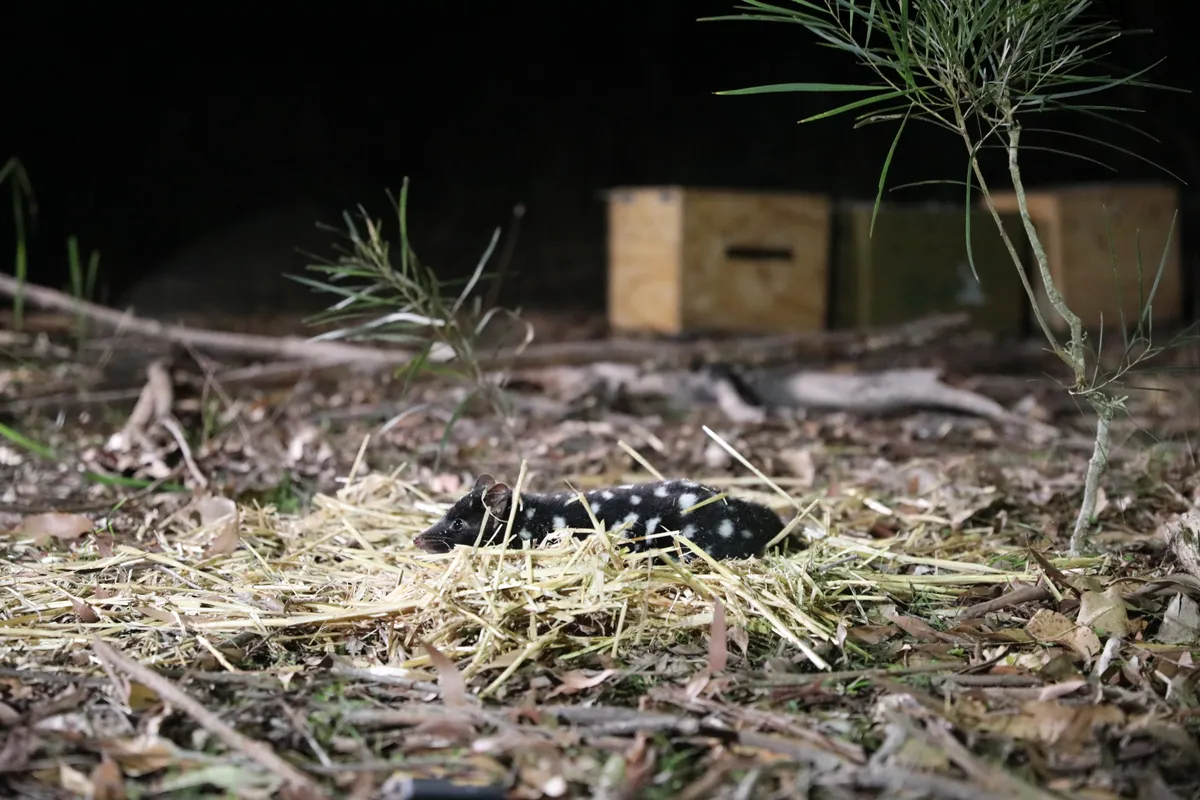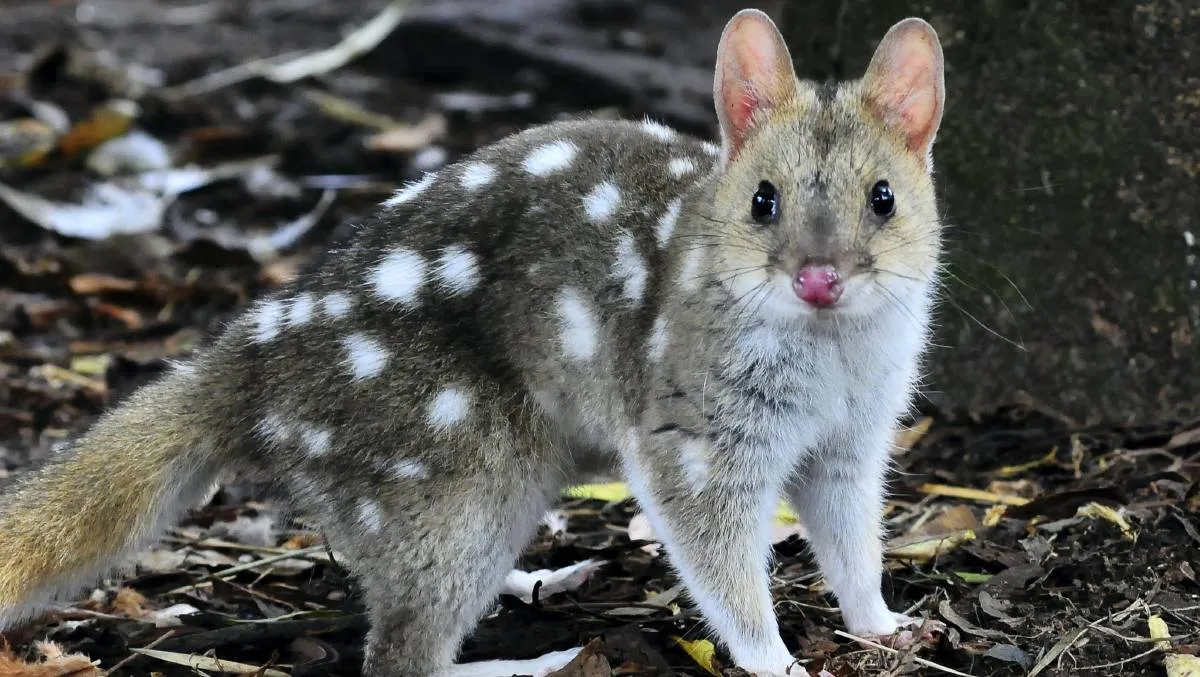Eastern quolls have now been reintroduced to mainland Australia as part of a reintroduction program led by Aussie Ark and Global Wildlife Conservation (GWC).
The species went extinct on the mainland in the 1960s, but survived in Tasmania, an island off the southern coast of Australia.
A group of captive bred individuals have been released into the wild in Booderee National Park.
“This is a historic moment for this wonderfully charismatic species and an important step in our efforts to restore balance to Australia’s ecosystems,” says Tim Faulkner, Aussie Ark president.
“While this release is a trial to see if the management practices we’ve developed for captive-bred quoll can, indeed, ensure their survival in the wild, we are hopeful that this is the start of an annual release program at Booderee that will ultimately help bring this species and others back from the brink.”

The eastern quoll Dasyurus viverrinus is one of four quoll species in Australia, all of which are classified as either Endangered or Critically Endangered on the IUCN Red List.
Habitat destruction and the introduction of non-native species, such as foxes and cats, have decimated their populations.
The 17 individuals released this year are part of Aussie Ark’s conservation breeding program, which bred captive quolls for the first time in 2017.

There are a remaining 52 eastern quolls at Aussie Ark’s facility in northern New South Wales, some of which will be released later this year into fenced sanctuaries in the Barrington Tops.
GWC and Aussie Ark are also working to return to the wild Tasmanian devils, brush tail rock wallabies, rufous bettong, eastern quoll, long-nosed potoroo, parma wallabies and southern brown bandicoots, each of which will help Australian ecosystems recover.

“As we figure out globally how to stem the overwhelming tide of biodiversity loss, it is clear that Australia has a profound role to play in addressing this challenge,” says GWC president Don Church.
“Through its incredible animal care, expertise and ambitious goals, we are comforted that Aussie Ark is helping lead the way.”
Main image: Eastern quoll. © Aussie Ark